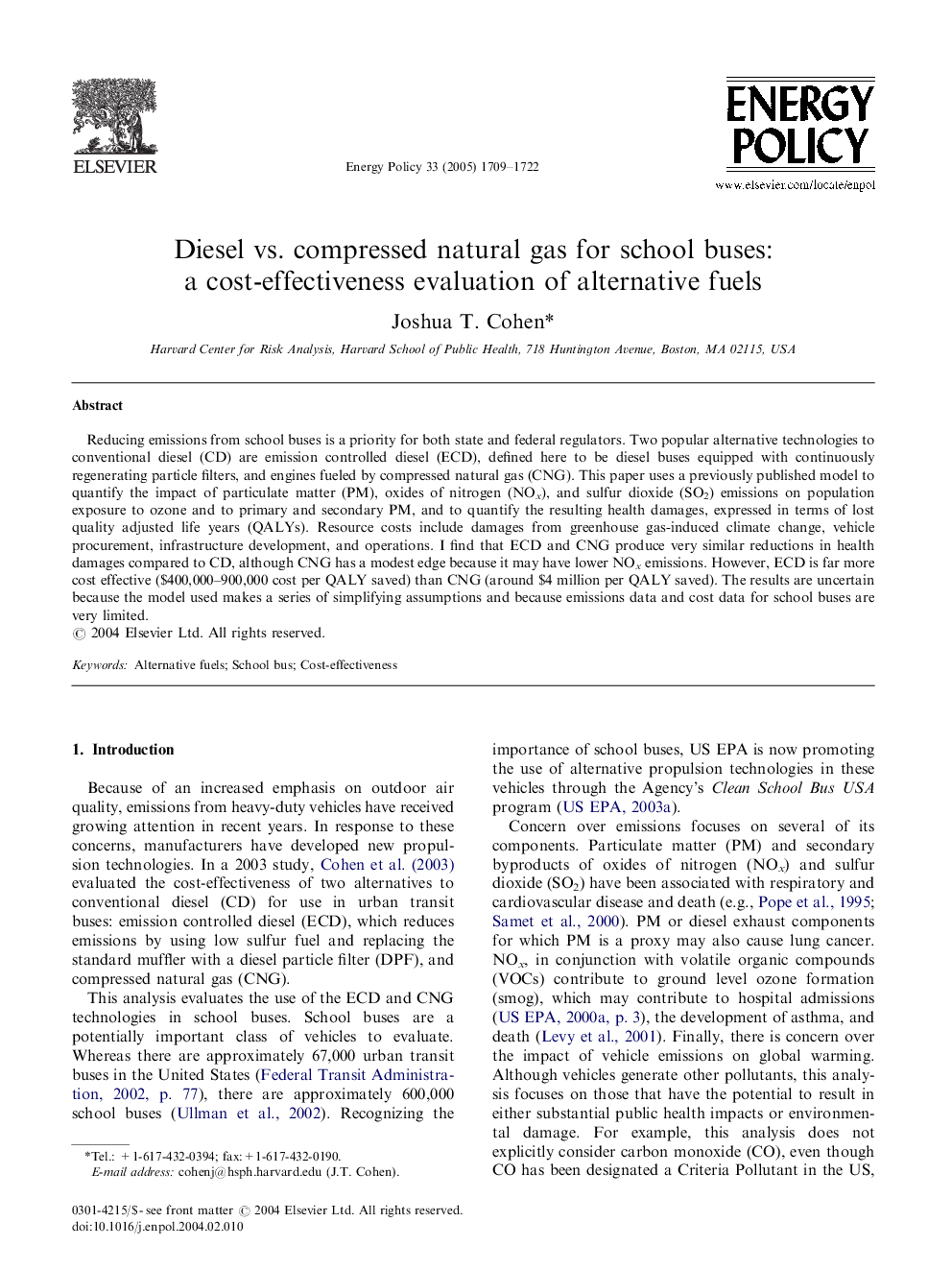| Article ID | Journal | Published Year | Pages | File Type |
|---|---|---|---|---|
| 10487447 | Energy Policy | 2005 | 14 Pages |
Abstract
Reducing emissions from school buses is a priority for both state and federal regulators. Two popular alternative technologies to conventional diesel (CD) are emission controlled diesel (ECD), defined here to be diesel buses equipped with continuously regenerating particle filters, and engines fueled by compressed natural gas (CNG). This paper uses a previously published model to quantify the impact of particulate matter (PM), oxides of nitrogen (NOx), and sulfur dioxide (SO2) emissions on population exposure to ozone and to primary and secondary PM, and to quantify the resulting health damages, expressed in terms of lost quality adjusted life years (QALYs). Resource costs include damages from greenhouse gas-induced climate change, vehicle procurement, infrastructure development, and operations. I find that ECD and CNG produce very similar reductions in health damages compared to CD, although CNG has a modest edge because it may have lower NOx emissions. However, ECD is far more cost effective ($400,000-900,000 cost per QALY saved) than CNG (around $4 million per QALY saved). The results are uncertain because the model used makes a series of simplifying assumptions and because emissions data and cost data for school buses are very limited.
Related Topics
Physical Sciences and Engineering
Energy
Energy Engineering and Power Technology
Authors
Joshua T. Cohen,
